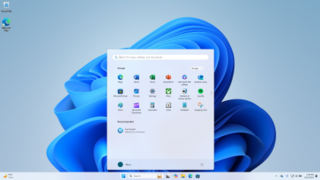
A tablet computer, commonly shortened to tablet, is a mobile device, typically with a mobile operating system and touchscreen display processing circuitry, and a rechargeable battery in a single, thin and flat package. Tablets, being computers, have similar capabilities, but lack some input/output (I/O) abilities that others have. Modern tablets largely resemble modern smartphones, the only differences being that tablets are relatively larger than smartphones, with screens 7 inches (18 cm) or larger, measured diagonally, and may not support access to a cellular network. Unlike laptops, tablets usually run mobile operating systems, alongside smartphones.

A dual-touchscreen is a computer or phone display setup which uses two screens, either or both of which could be touch-capable, to display both elements of the computer's graphical user interface and virtualized implementations of common input devices, including virtual keyboards. Usually, in a dual-touchscreen computer or computing device, the most persistent GUI elements and functions are displayed on one, hand-accessible touchscreen alongside the virtual keyboard, while the other, more optically-centric display is used for those user interface elements which are either less or never accessed by user-generated behaviors.
Courier was a prototype concept by Microsoft for a dual-touchscreen tablet. The device was conceived as being a digital notebook, consisting of two 7-inch touchscreens hinged together like a book, and running a custom operating system built primarily around handwriting input and a notebook-like journal for storing notes, images, and clippings from web pages.

A 2-in-1 laptop, also known as 2-in-1 PC, 2-in-1 tablet, laplet, tabtop, laptop tablet, or simply 2-in-1, is a portable computer that has features of both tablets and laptops.

Microsoft Surface is a series of touchscreen-based personal computers, tablets, and interactive whiteboards designed and developed by Microsoft, most of them running the Windows operating system. They are designed to be premium devices that set examples for manufacturers of other Windows-compatible products. It comprises several generations of hybrid tablets, 2-in-1 detachable notebooks, a convertible desktop all-in-one, an interactive whiteboard, and various accessories, many with unique form factors. The majority of devices in the Surface lineup are based on Intel processors and compatible with Windows 10 or Windows 11.

The Samsung Ativ Q was a 13.3-inch convertible laptop to be manufactured by Samsung. Unveiled at a Samsung Premiere event on June 20, 2013, the tablet was to run Windows 8, but also shipped with software that also allowed it to run the Android operating system. The Ativ Q's hardware was also distinguished by multiple folding states and a high resolution display.

The Surface Pro 3 is the third-generation Surface-series 2-in-1 detachable, designed, developed, marketed, and produced by Microsoft. It originally ran the Windows 8.1 Pro operating system (OS), but the optional upgrade to Windows 10 Pro (OS) operating system was later added.
Asus Transformer is a series of 2-in-1 convertibles, detachables and hybrid tablet computers, designed and manufactured by Asus, consisting of three major lineups.
Windows 10 has several editions, all with varying feature sets, use cases, or intended devices. Certain editions are distributed only on devices directly from an original equipment manufacturer (OEM), while editions such as Enterprise and Education are only available through volume licensing channels. Microsoft also makes editions of Windows 10 available to device manufacturers for use on specific classes of devices, including IoT devices and previously marketed Windows 10 Mobile for smartphones.

The Surface Book 2 is the second generation of the Surface Book, part of the Microsoft Surface line of personal computers. It is a 2-in-1 PC which can be used like a conventional laptop, or the screen can be detached and used separately as a tablet, with touch and stylus input. In addition to the 13.5-inch screen available in the original Surface Book introduced two years before, it is also available in a 15-inch screen model. It was released in November 2017, and replaced in Microsoft's product line by the Surface Book 3 in May 2020.

Xbox Cloud Gaming is a cloud gaming service as part of Xbox offered by Microsoft Gaming. Initially released in beta testing in November 2019, the service later launched for subscribers of Xbox Game Pass Ultimate on September 15, 2020. Xbox Game Pass cloud gaming is provided to subscribers of Ultimate at no additional cost. Xbox Cloud Gaming operates by linking the device to a remote server in the cloud.
The Surface Laptop 3 is a laptop computer developed by Microsoft. It is the third generation of Surface Laptop and was unveiled alongside the Surface Pro 7 and Surface Pro X on an event on 2 October 2019. It succeeds the Surface Laptop 2 that was released in October 2018.
The Surface Duo is a dual-touchscreen Android smartphone manufactured by Microsoft. Announced during a hardware-oriented event on October 2, 2019, and officially released on September 10, 2020, it is part of the Microsoft Surface series of touchscreen hardware devices, and the first device in the line that does not run Windows. It also marks Microsoft's first smartphone since the dissolution of Microsoft Mobile and the Windows Phone platform.

The Surface Pro X is a 2-in-1 detachable tablet computer developed by Microsoft. It was developed alongside and was announced on 2 October 2019 alongside the Surface Pro 7 and Surface Laptop 3. Updated hardware was announced alongside Surface Laptop Go and Surface accessories on October 1, 2020 and September 22, 2021. The device starts at $899.99 USD / £849.99.

Windows 11 is the latest major release of Microsoft's Windows NT operating system, released on October 5, 2021. It succeeded Windows 10 (2015) and is available for free for any Windows 10 devices that meet the new Windows 11 system requirements.

The Surface Duo 2 is a dual-touchscreen Android smartphone manufactured by Microsoft. Announced during a hardware-oriented event on September 22, 2021, it is the successor to the original Surface Duo.
The Surface Laptop SE is a laptop computer manufactured by Microsoft. Unveiled on November 9, 2021, it is an entry-level model in the Surface Laptop series positioned exclusively towards the education market. It was released on 9 November 2021.

Windows 10X is a cancelled edition of Windows 10, a major release of the Microsoft Windows series of operating systems. Announced by Microsoft on October 2, 2019, it was initially developed as an operating system to support dual-screen devices, such as the unreleased Surface Neo. 10X was expected to be released in 2020, but Microsoft later announced that the project had been cancelled in May 2021. However, some features and design changes from 10X were integrated into the newer Windows 11. While the operating system was originally designed for dual-screen devices, Windows 10X shifted its target to single-screen devices in 2020 due to increasing demand for traditional computers from the COVID-19 pandemic.












